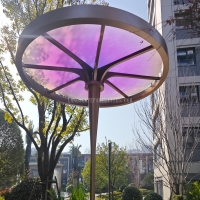Welcome to the website for landscape facilities products and knowledge.
How does the bin’s design ensure it remains resistant to corrosion in humid climates?
In humid climates, where moisture and salt-laden air accelerate rust and degradation, bin designs must prioritize corrosion resistance to ensure longevity. Modern corrosion-resistant bins achieve this through a combination of high-quality materials, protective coatings, and smart engineering.
1. Material Selection: Bins designed for humid environments often use stainless steel, galvanized steel, or heavy-duty polymers. Stainless steel contains chromium, which forms a passive oxide layer to prevent rust, while galvanized steel features a zinc coating that acts as a sacrificial barrier.
2. Protective Coatings: Powder coating or epoxy layers provide an additional shield against moisture and oxidation. These coatings are applied electrostatically and cured under heat, creating a seamless, impermeable barrier.
3. Drainage & Ventilation: Strategic perforations or raised bases prevent water accumulation, reducing prolonged exposure to moisture—a key factor in corrosion prevention.
4. UV-Resistant Additives: For plastic bins, UV stabilizers are mixed into polymers to prevent brittleness and fading caused by humidity and sunlight.
By integrating these features, corrosion-resistant bins maintain structural integrity even in the most demanding humid conditions, offering long-term reliability for both residential and industrial use.
Related search:

Recommendation
Metal frame with gradient color acrylic combined with high-end shading landscape facilities